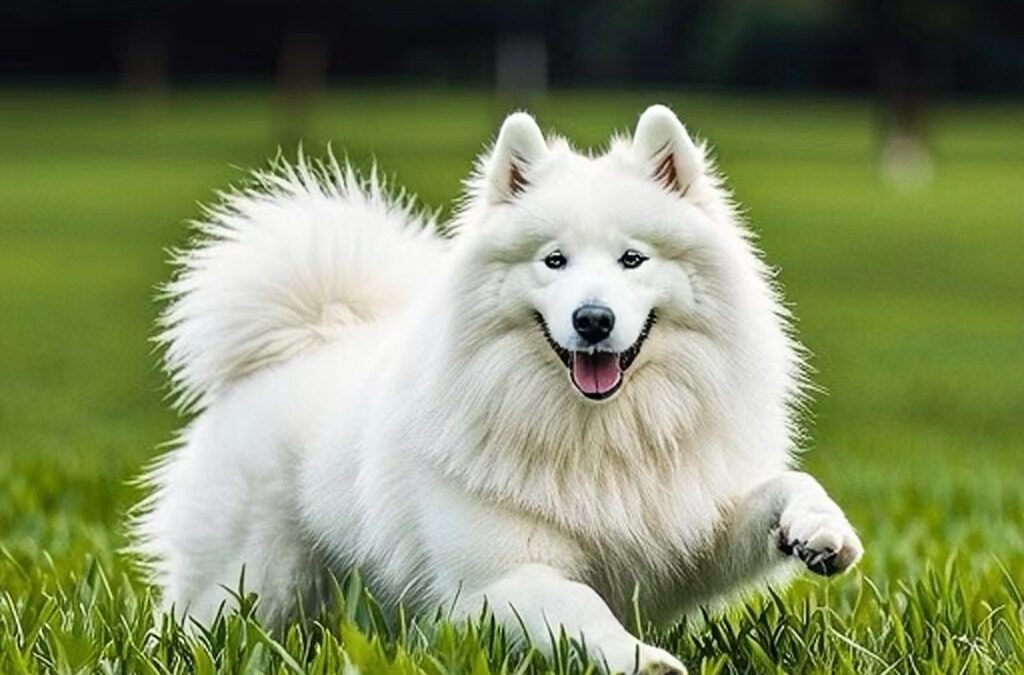
by TCMVET | Jun 7, 2024 | Dog Cancer & Tumors
Stomach cancer in dogs, though relatively rare, can be a devastating diagnosis for pet owners. Early detection and comprehensive care are crucial in managing this disease. In this article, we will explore the symptoms, diagnosis, and treatment options for stomach cancer in dogs, providing valuable insights to help pet owners navigate this challenging journey.
Symptoms of Stomach Cancer in Dogs
Stomach cancer, also known as gastric cancer, often presents with subtle and non-specific symptoms that can be easily overlooked. Recognizing these signs early can significantly improve the prognosis for your furry friend. Common symptoms include:
- Loss of Appetite: A noticeable decrease in your dog’s interest in food is often one of the first signs.
- Weight Loss: Rapid or unexplained weight loss can be a cause for concern.
- Vomiting: Frequent vomiting, especially if it contains blood, should be addressed immediately.
- Lethargy: A general lack of energy and enthusiasm for activities they once enjoyed.
- Abdominal Pain: Signs of discomfort when their abdomen is touched or a change in posture to avoid pressure on the stomach.
Diagnosing Stomach Cancer in Dogs
If you observe any of the aforementioned symptoms, it is essential to consult a veterinarian promptly. The diagnostic process may involve several steps to confirm the presence of stomach cancer:
- Physical Examination: The vet will conduct a thorough physical check-up to identify any abnormalities.
- Blood Tests: These tests can help identify any underlying issues and provide insight into the dog’s overall health.
- Imaging: X-rays, ultrasounds, and endoscopic examinations can reveal tumors or irregularities in the stomach.
- Biopsy: A definitive diagnosis often requires a biopsy, where a small sample of stomach tissue is taken for laboratory analysis.
Treatment Options for Stomach Cancer in Dogs
The treatment plan for stomach cancer in dogs depends on various factors, including the stage of the cancer, the dog’s overall health, and the specific type of tumor. Common treatment options include:
- Surgery: Surgical removal of the tumor is often the most effective treatment, especially if the cancer is detected early and is localized.
- Chemotherapy: This can be used in conjunction with surgery or as a standalone treatment to manage cancer cells and prevent further spread.
- Radiation Therapy: Less commonly used for stomach cancer, radiation therapy may still be an option depending on the tumor’s location and size.
- Holistic Treatments: Integrative approaches, such as dietary changes, herbal supplements like TCMVET Baituxiao, and acupuncture, can support conventional treatments and enhance the dog’s quality of life.
- 姑息治疗:在严重的情况下,重点可能会转移到姑息治疗,以确保狗保持舒适且无痛。
Preventing Stomach Cancer in Dogs
While it is not always possible to prevent stomach cancer, maintaining your dog’s overall health through a balanced diet, regular exercise, and routine veterinary check-ups can reduce the risk of many diseases, including cancer. Additionally, being vigilant about any changes in your dog’s behavior or health and seeking prompt veterinary care can aid in early detection and treatment.
Conclusion
Stomach cancer in dogs is a serious condition that requires prompt attention and a comprehensive treatment approach. By understanding the symptoms, diagnostic procedures, and treatment options, pet owners can play a crucial role in managing their dog’s health and well-being. If you suspect your dog may have stomach cancer, consult with a veterinarian immediately to explore the best course of action.
For more information on natural supplements and holistic treatments for dogs with cancer, visit our blog at TCMVET. We are dedicated to providing the latest research and resources to help you support your pet’s health naturally.

by TCMVET | Jun 7, 2024 | Dog Cancer & Tumors
Sorry, but you do not have permission to view this content.

by TCMVET | Jun 6, 2024 | Food & Health
Methionine, an essential amino acid, is garnering attention for its potential role in cancer treatment for dogs. While traditionally recognized for its contributions to liver function, detoxification, and overall metabolic health, recent studies suggest methionine might offer benefits for dogs battling cancer. This article explores the unique potential of methionine in canine cancer care, its benefits, proper dosage, and considerations for pet owners.
What is Methionine?
Methionine is an essential amino acid, meaning it must be obtained through diet as the body cannot synthesize it. It plays a crucial role in various biological processes, including:
- Protein synthesis
- Detoxification
- Methylation (a process crucial for DNA repair and gene regulation)
- Antioxidant production
Potential Benefits of Methionine for Dogs with Cancer
- Anti-Cancer Properties: Methionine restriction has been studied for its potential to inhibit cancer cell growth. Cancer cells often rely heavily on methionine, and reducing its availability might slow tumor progression.
- Detoxification: Methionine supports the production of glutathione, a powerful antioxidant that helps detoxify harmful substances in the body, potentially reducing the oxidative stress associated with cancer.
- Immune Support: Adequate methionine levels can support a healthy immune system, which is vital for dogs fighting cancer.
Dosage and Administration
Determining the appropriate dosage of methionine for dogs with cancer should be done under veterinary supervision. General guidelines include:
- Consultation: Always start by consulting with your veterinarian to assess your dog’s specific needs and health status.
- Dietary Sources: Methionine is naturally present in high-protein foods like meat, fish, and eggs. A balanced diet can help meet your dog’s methionine requirements.
- Supplementation: If supplementation is necessary, your vet can recommend a suitable product and dosage based on your dog’s weight, health condition, and specific cancer type.
Case Studies and Success Stories
Several anecdotal reports and preliminary studies suggest that methionine supplementation, combined with other cancer treatments, may help improve outcomes for dogs with cancer. Pet owners have observed improvements in their dogs’ energy levels, appetite, and overall well-being.
Precautions and Considerations
- Veterinary Supervision: Always administer methionine under the guidance of a veterinarian to ensure proper dosing and to avoid potential side effects.
- Balanced Diet: Ensure your dog receives a well-balanced diet to avoid deficiencies in other essential nutrients.
- Regular Monitoring: Regular veterinary check-ups are crucial to monitor your dog’s health and adjust the treatment plan as needed.
Conclusion
Methionine holds promise as a supportive treatment for dogs with cancer. Its potential to inhibit cancer cell growth, support detoxification, and boost the immune system makes it a valuable addition to a comprehensive cancer treatment plan. As with any supplement, proper veterinary guidance is essential to ensure safety and effectiveness.

by TCMVET | Jun 6, 2024 | Medicines & Therapies
Artemisinin, a compound derived from the sweet wormwood plant (Artemisia annua), has gained attention for its potential benefits in treating cancer. Originally used as an anti-malarial drug, artemisinin is now being explored for its anti-cancer properties, not just in humans, but also in pets. This article will delve into the proper dosage of artemisinin for dogs, its benefits, and precautions to ensure safe and effective use.
Understanding Artemisinin
Artemisinin and its derivatives, such as artesunate and artemether, have shown promising results in targeting cancer cells. They work by generating reactive oxygen species (ROS) that selectively kill cancer cells while sparing healthy ones. This makes artemisinin a valuable adjunct to traditional cancer therapies.
Determining the Correct Dosage
The correct dosage of artemisinin for dogs depends on several factors, including the dog’s weight, overall health, and the severity of the condition. It’s crucial to consult with a veterinarian before starting any new treatment. However, here are some general guidelines:
- Initial Dosage: The typical starting dosage is around 2-4 mg per kilogram of the dog’s body weight, administered once daily.
- Adjustments: Depending on the dog’s response and tolerance, the dosage may be adjusted. Some protocols suggest increasing the dosage to 6-8 mg/kg daily, divided into two doses.
- Monitoring: Regular monitoring by a veterinarian is essential to ensure the treatment’s effectiveness and to watch for any potential side effects.
Benefits of Artemisinin for Dogs
- Targeted Action: Artemisinin selectively targets cancer cells, reducing the risk of harm to healthy tissues.
- Reduced Side Effects: Compared to conventional cancer treatments like chemotherapy, artemisinin generally has fewer and less severe side effects.
- Synergy with Other Treatments: Artemisinin can be used alongside other treatments, potentially enhancing their effectiveness.
Precautions and Considerations
- Veterinary Supervision: Always administer artemisinin under the guidance of a qualified veterinarian to avoid incorrect dosing and potential adverse effects.
- Regular Blood Tests: Regular blood tests are recommended to monitor the dog’s health and response to the treatment.
- Interaction with Other Medications: Discuss any other medications your dog is taking with your vet to avoid harmful interactions.
Case Studies and Success Stories
Several anecdotal reports and case studies have highlighted the success of artemisinin in treating dogs with cancer. Pet owners have reported significant improvements in their dogs’ health, including reduced tumor size and increased energy levels. These success stories underscore the potential of artemisinin as part of an integrative approach to cancer treatment.
Conclusion
Artemisinin presents a promising option for treating cancer in dogs, offering a targeted approach with fewer side effects. Proper dosage and veterinary supervision are critical to ensure the safe and effective use of this compound. As research continues, artemisinin may become a standard component of cancer treatment protocols for our canine companions.

by TCMVET | Jun 6, 2024 | Medicines & Therapies
Cancer in dogs is a growing concern for pet owners. Traditional treatments like surgery, chemotherapy, and radiation are often stressful for pets and may come with significant side effects. However, a revolutionary treatment called Tigilanol Tiglate is offering new hope. This innovative drug is designed to treat tumors in dogs effectively and with fewer side effects. In this article, we’ll explore what Tigilanol Tiglate is, how it works, and its benefits for dogs with tumors.
What is Tigilanol Tiglate?
Tigilanol Tiglate, also known as EBC-46, is a novel compound derived from the seeds of the blushwood tree (Fontainea picrosperma), native to the rainforests of North Queensland, Australia. This compound has shown remarkable efficacy in treating various types of tumors in dogs, making it a promising alternative to conventional cancer treatments.
How Does Tigilanol Tiglate Work?
Tigilanol Tiglate works by triggering a localized immune response within the tumor, leading to its rapid destruction. The drug activates protein kinase C, which disrupts the blood supply to the tumor, causing the cancerous cells to die. Additionally, it promotes the formation of new, healthy tissue at the site of the tumor, aiding in the healing process.
Benefits of Tigilanol Tiglate for Dogs
- Minimally Invasive: Unlike surgery, Tigilanol Tiglate is administered through a simple injection directly into the tumor, reducing the stress and recovery time for your pet.
- Rapid Results: The effects of Tigilanol Tiglate can be seen within days of treatment, with significant tumor reduction or complete elimination observed in many cases.
- Reduced Side Effects: Traditional cancer treatments can cause various side effects, such as nausea, fatigue, and hair loss. Tigilanol Tiglate, being a localized treatment, minimizes these adverse effects.
- Improved Quality of Life: By effectively reducing or eliminating tumors with fewer side effects, Tigilanol Tiglate helps improve the overall quality of life for dogs undergoing cancer treatment.
Case Studies and Success Stories
Numerous case studies have highlighted the success of Tigilanol Tiglate in treating canine tumors. Dogs that were previously considered untreatable have shown remarkable recovery and prolonged survival rates following Tigilanol Tiglate treatment. Pet owners have reported noticeable improvements in their dogs’ energy levels, appetite, and overall well-being.
Consulting Your Veterinarian
If you suspect your dog has a tumor or if your dog has been diagnosed with cancer, consult your veterinarian about Tigilanol Tiglate. Your vet can provide detailed information on the suitability of this treatment for your dog’s specific condition and discuss the potential benefits and risks involved.
Conclusion
Tigilanol Tiglate represents a significant advancement in the treatment of tumors in dogs. Its ability to rapidly destroy cancerous cells while minimizing side effects makes it a valuable option for pet owners seeking effective cancer treatment for their dogs. As research continues and more veterinarians adopt this innovative therapy, Tigilanol Tiglate could become a standard treatment for canine cancer, offering hope and healing to countless pets and their families.






